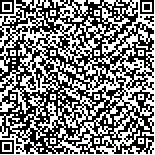下载中心
优秀审稿专家
优秀论文
相关链接
摘要

风云三号A星(FY-3A)搭载的微波湿度(MWHS)计采用双边带接收机体制,选择主要受水汽影响的(183.31±1) GHz,(183.31±3) GHz,(183.31±7) GHz和窗区150 GHz作为通道频率。本文首先分析了观测亮温值与利用辐射传输方程仿真的亮温值之间的关系,二者相比具有较好的一致性。其次利用神经网络方法反演大气相对湿度,并与线性回归方法进行对比,本文选用的区域内,神经网络方法优于线性回归法。最后,利用本文创建的神经网络模型与正在业务使用的AMSU-B反演模型进行反演均方差和稳定度对比,结果表明,本文创建的神经网络模型在所选区域,大气相对湿度反演精度与AMSU-B神经网络模型相当(反演均方差为15%-25%);水汽密度反演均方差除地面未知因素影响外,与探空观测相比,整体均方差小于1 g/m3;不论在中纬度地区还是热带地区,都能较好地反演大气湿度的垂直分布廓线。同时,本文初次尝试在神经网络反演湿度廓线中引入墨西哥帽小波函数,结果表明,运用墨西哥帽小波函数在保证反演性能的同时,能有效减小迭代时间,避免陷入局部迭代。
A new microwave humidity sounder (MWHS) developed and built by CSSAR was deployed in China in May, 2008. The sounder is part of a suit of instruments onboard FY-3 satellite, which measures brightness temperatures from 3 double-sideband channels centered at (183.31±1)GHz, (183.31± 3)GHz and (183.31±7)GHz. Atmospheric emission in these regions is primarily due to water vapor and infl uences of liquid water. Measurements were compared with simulations obtained using forward radiative transfer equation. The comparison of brightness temperatures showed that the measurements agreed well with model simulations. Humidity profiles were retrieved using back propagation neural network (BP-NN) algorithm and other methods. The results show that humidity profiles derived using back propagation algorithm best agreed with the profiles from radiosonde datasets. Second, compared to the humidity retrievals by AMSU-B retrieval model, root-mean-square (RMS) of relative humidity was comparable with those of AMSU-B in a range of 15% to 25%, and RMS of water vapor density was smaller than 1 g/m3. Therefore, it can be used for retrieving atmospheric humidity profiles for operational applications. Meanwhile, the paper firstly uses Mexican hat wavelet function into BP-NN, and the results show that it is comparable with BP-NN. Most importantly, Mexican hat wavelet function can reach convergence quickly and avoid of easily getting stuck in local minima.

